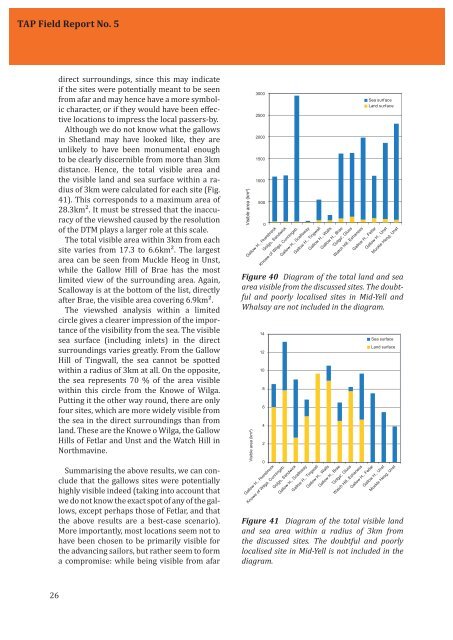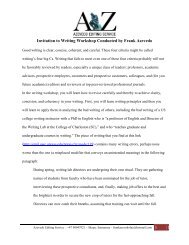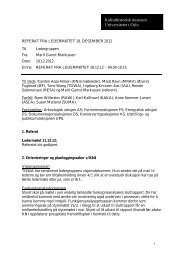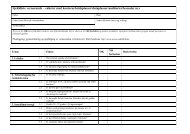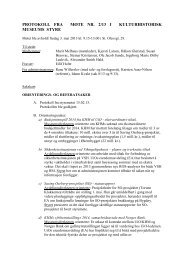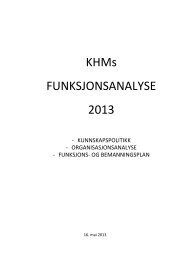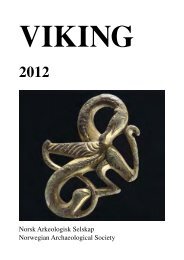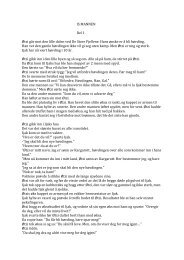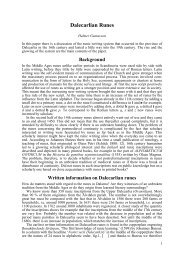TAP Field Report No. 5 A survey of Shetland's gallow hills Joris ...
TAP Field Report No. 5 A survey of Shetland's gallow hills Joris ...
TAP Field Report No. 5 A survey of Shetland's gallow hills Joris ...
- No tags were found...
You also want an ePaper? Increase the reach of your titles
YUMPU automatically turns print PDFs into web optimized ePapers that Google loves.
<strong>TAP</strong> <strong>Field</strong> <strong>Report</strong> <strong>No</strong>. 5direct surroundings, since this may indicateif the sites were potentially meant to be seenfrom afar and may hence have a more symboliccharacter, or if they would have been effectivelocations to impress the local passers-by.Although we do not know what the <strong>gallow</strong>sin Shetland may have looked like, they areunlikely to have been monumental enoughto be clearly discernible from more than 3kmdistance. Hence, the total visible area andthe visible land and sea surface within a radius<strong>of</strong> 3km were calculated for each site (Fig.41). This corresponds to a maximum area <strong>of</strong>28.3km². It must be stressed that the inaccuracy<strong>of</strong> the viewshed caused by the resolution<strong>of</strong> the DTM plays a larger role at this scale.The total visible area within 3km from eachsite varies from 17.3 to 6.6km². The largestarea can be seen from Muckle Heog in Unst,while the Gallow Hill <strong>of</strong> Brae has the mostlimited view <strong>of</strong> the surrounding area. Again,Scalloway is at the bottom <strong>of</strong> the list, directlyafter Brae, the visible area covering 6.9km².The viewshed analysis within a limitedcircle gives a clearer impression <strong>of</strong> the importance<strong>of</strong> the visibility from the sea. The visiblesea surface (including inlets) in the directsurroundings varies greatly. From the GallowHill <strong>of</strong> Tingwall, the sea cannot be spottedwithin a radius <strong>of</strong> 3km at all. On the opposite,the sea represents 70 % <strong>of</strong> the area visiblewithin this circle from the Knowe <strong>of</strong> Wilga.Putting it the other way round, there are onlyfour sites, which are more widely visible fromthe sea in the direct surroundings than fromland. These are the Knowe o Wilga, the GallowHills <strong>of</strong> Fetlar and Unst and the Watch Hill in<strong>No</strong>rthmavine.Summarising the above results, we can concludethat the <strong>gallow</strong>s sites were potentiallyhighly visible indeed (taking into account thatwe do not know the exact spot <strong>of</strong> any <strong>of</strong> the <strong>gallow</strong>s,except perhaps those <strong>of</strong> Fetlar, and thatthe above results are a best-case scenario).More importantly, most locations seem not tohave been chosen to be primarily visible forthe advancing sailors, but rather seem to forma compromise: while being visible from afar Figure 40 Diagram <strong>of</strong> the total land and seaarea visible from the discussed sites. The doubtfuland poorly localised sites in Mid-Yell andWhalsay are not included in the diagram. Figure 41 Diagram <strong>of</strong> the total visible landand sea area within a radius <strong>of</strong> 3km fromthe discussed sites. The doubtful and poorlylocalised site in Mid-Yell is not included in thediagram.26


